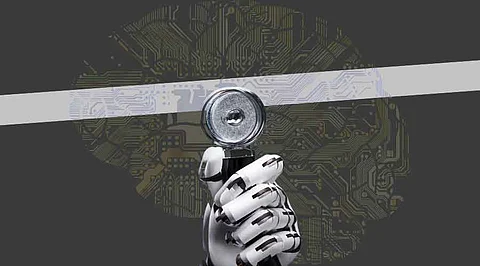

A general-purpose artificial intelligence technique called machine learning may infer associations from data without the requirement to assign them a priority. The key selling point is the capacity to generate predictive models without making firm assumptions about the underlying processes, which are frequently unidentified or inadequately characterized. In contrast to conventional machine learning, deep learning learns representations from the raw data. Deep learning, in reality, enables computer models with several neural network-based processing layers to learn representations of data with various degrees of abstraction. The quantity of hidden layers, their connections, and deep learning's capacity to learn meaningful abstractions of the inputs are the main distinctions between deep learning and conventional artificial neural networks (ANNs). Traditional ANNs, on the other hand, are often restricted to three layers and trained to provide supervised representations that are optimal solely for the particular task at hand and are typically not generalizable. By maximizing a local unsupervised criteria, each layer of a deep learning system creates a representation of the observed patterns based on the data it gets as inputs from the layer below. The important feature of deep learning is that these layers of features are learnt from data using a general-purpose learning technique rather than being created by human engineers.
Deep learning in healthcare can unearth possibilities and patterns that were previously unknown in clinical data, enabling medical practitioners to treat patients more effectively. Deep learning models' multi-layered approach helps them complete classification tasks like spotting minute anomalies in medical image data, classifying patients into cohorts based on risk factors, or spotting connections between symptoms and results in huge amounts of unstructured data. Here are the healthcare uses of deep learning that stand out the most:
Diagnostics and imaging in medicine: Through the interpretation of diagnostic pictures like X-rays, CT scans, and MRI scans, deep learning algorithms aid in diagnosis. The algorithms are able to identify risks and point out anomalies in the medical pictures.
Drug combination discovery: Deep learning is essential for this process. During the pandemic, cutting-edge technologies including machine learning, AI, and deep learning were employed to help the development of medications and vaccinations. Clinical, genetic, and demographic data may be handled by deep learning algorithms well, and a number of toolkits can be utilized to identify trends. With the use of machine learning and deep learning, scientists can now detect protein structures more quickly and do predictive analytics.
Personalized medicine – Deep learning models make it simpler to evaluate a patient's health data, critical symptoms, medical history, test results, and other information. As a consequence, medical professionals can better understand each patient and offer them specialized care. These revolutionary technologies make it possible to identify many, effective therapy options for diverse individuals.
Clinical trials made easy – Machine learning and deep learning may be used to conduct predictive analytics in order to investigate eligible clinical trial participants and enable scientists to pool individuals from various data points and sources. Deep learning will also enable smooth trial monitoring with less involvement from and mistakes from human beings.
Although deep learning achieves human-level performance and has a higher impact on medical imaging than machine learning, there are still certain restrictions:
It is challenging to gather enough labeled data. A convolutional neural network needs a lot of samples and parameters to be trained to perform well. It might be challenging to gather enough labeled training data at times. It is challenging to train an appropriate network because to the variations in features, patterns, colors, values, and forms in real medical picture data.
The hierarchical and positional link between characteristics collected from pictures cannot be explained by convolution neural networks. For instance, whereas neurons are capable of capturing dataset characteristics, they are less successful in capturing the spatial connection between these properties. Sabour et al. (2017) suggested the Capsules Network in response to this. Instead of functioning like a standard neuron in this form, the capsules' input and output are vectors rather than scalars. The link between characteristics may be represented by the vector's value, while the vector's length indicates the likelihood that instances will occur.
Although magnetic resonance imaging and CT pictures provide images with a three-dimensional structure by nature, convolutional neural networks are best suited for processing two-dimensional image data. Key information will be lost if the convolutional neural network is employed to process these medical photos.
Join our WhatsApp Channel to get the latest news, exclusives and videos on WhatsApp
_____________
Disclaimer: Analytics Insight does not provide financial advice or guidance. Also note that the cryptocurrencies mentioned/listed on the website could potentially be scams, i.e. designed to induce you to invest financial resources that may be lost forever and not be recoverable once investments are made. You are responsible for conducting your own research (DYOR) before making any investments. Read more here.
